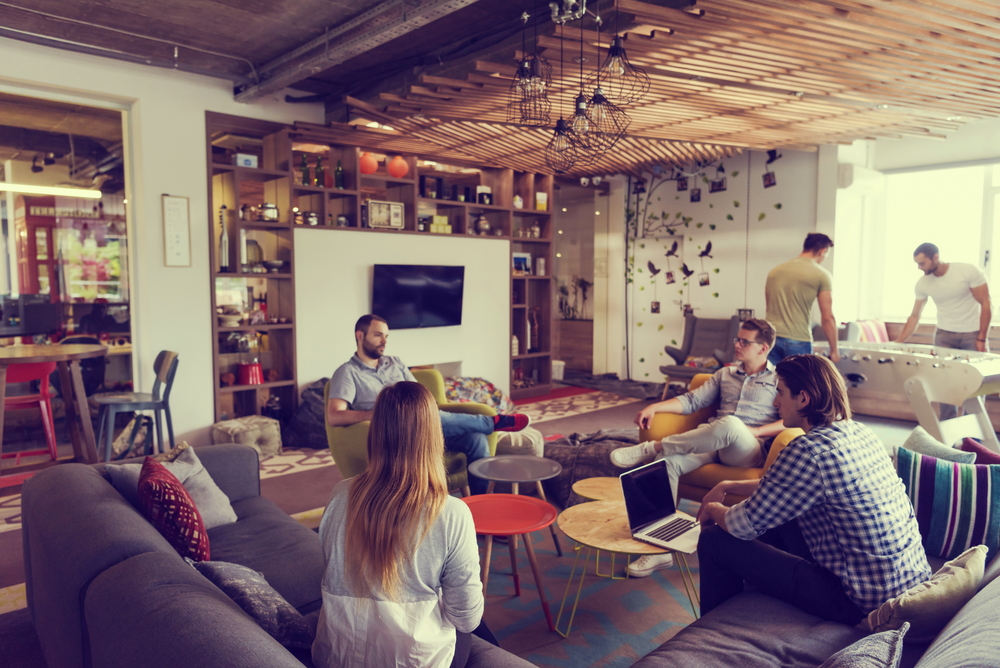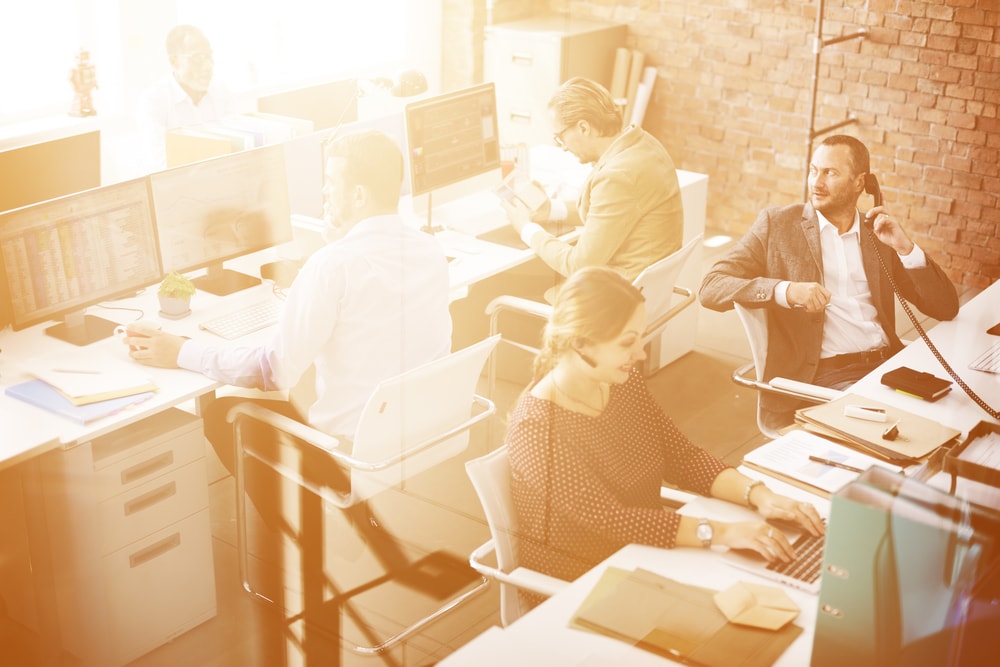Corporate Giants like Google and Pixar have revolutionized the workspace. More and more businesses are embracing a more unconventional office in order to stimulate and inspire their employees. While simply changing the aesthetics of a building by adding splashes of colour can prove beneficial, there are several interior design trends for the workspace that are sure to boost positivity and productivity. 1) Collaboration Bringing collaboration to the workplaces means creating spaces that encourage discussion and bring employees together. One of the best ways to do this is to utilise collaborative furniture. Furniture can quickly transform open plan rooms and motivates employees to share ideas – which is the most paramount detail when having a successful business. Consider lounge furniture that twists and curves so that employees find themselves facing their peers rather than sitting side to side. Mobile displays and kiosks and enforce the sharing of space, thus bringing teams together in various places throughout the office. 2) Re-designing for Organisation There are various elements that can bring organisation to the forefront of any design. Modern workspaces are adapting a much more minimalist aesthetic and functionality in order to smooth out the kinks and reduce stress. Technology is one way to re-think spaces, by converting old paper files to digital you lose wasted space and can utilise it in a much more functional way. The next step to creating a more tidy and thoughtful space is to remove the walls. Create spaces using other methods, like using glass walls, or unique dividers. 3) Activity-based design Bring employees together in open multi-purpose areas and rid the office of one-job desks surrounded by cubicle walls. Wireless work has removed the need for a static workspace, so opening up the office to let employees travel from area to area, encourages collaboration and boosts psychological and physical health. 4) Inspire Inspire employees with art installations, colour & comfort. Bring the outside in with Biophilic design and natural light. Choose new ways to bring people together with 3D imaging and meeting or break rooms that eliminate the seriousness. Creating a relaxed atmosphere will bring employee’s mental state to a level of comfort and happiness, thus solidifying enjoyment, which has been proven to boost productivity. 5) WELL Standards The most important trend of 2017 is implementing the WELL Standards. These standards centre around 7 core values that have been proven to increase productivity in the work place by boosting mental and physical health. The WELL Standards incorporate air, water, nourishment, fitness, comfort and mind into the workspace design. The focus is on the connection between the buildings employees spend time on and how they have an impact on their occupants. WELL Standards are the forefront of modern design and have proven paramount to a company’s success. Each of these categories broadens to include many different elements. Incorporating movement in an office can mean many different things, just as bringing in nature could be facilitated through ‘live’ walls of vines or simply more glass to show daylight. One thing is certain, these… Continue reading Latest Trends in Office Interior Design
Latest Trends in Office Interior Design

